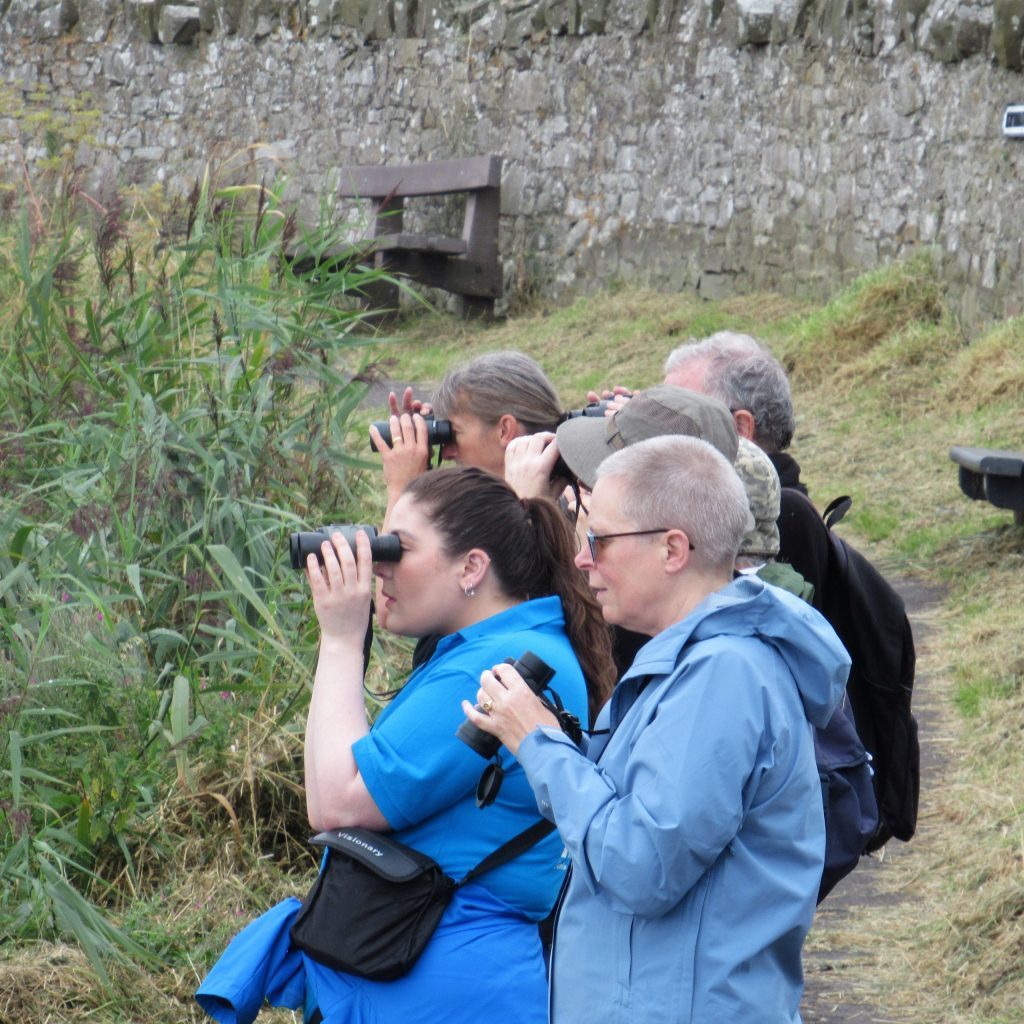
Berwickshire Coastal Path – St Abbs to Eyemouth
This is only a small part of the stunning Berwickshire Coastal Path, but it packs a punch in terms of beauty and wildlife. This route covers most of the coast adjacent to the Berwickshire Marine Reserve, so I was pleased to lead another guided walk along this stretch to raise awareness and money for the reserve.
Accessible by bus from Berwick-Upon-Tweed this walk is a good one to do all year round, although late summer is particularly good with a wide range of wildflowers attracting pollinators. This walk was on 16th August and there were 8 of us. As usual we although I was leader, we all shared our knowledge and I think all learned something new.
We got the 10:00am bus from Eyemouth, which brings us into St Abbs in time to start the walk at 10:30.
Cormorants or shags?
Heading south from St Abbs above the harbour you pick up a waymarker for the coastal path which takes you past a lovely row of houses before picking up the cliff top. It is well worth scanning the sea throughout this walk for dolphins and whales – they are frequently seen in this area (but not this time.) On the rocks near the cliffs we were able to see cormorants and shags, although it was a little tricky to tell them apart. In the water and fishing it was easier to identify them: the shag does a large arc as it dives down, whereas the cormorant goes straight in. There were plenty of herring gulls and a couple of very handsome great black backed gulls. I advised the walkers to look out for gannets and, right on cue, they arrived. We had splendid views of gannets throughout the walk and really enjoyed the thrill of watching them diving in.
Out on the water were rafts of guillemots, many of them youngsters and their calls carried across the water for much of the walk.
Rock Pooling
It is a short walk along to the beautiful Coldingham Bay – quite possibly my favourite beach anywhere. A sheltered cove, with a good beach, safe swimming and rockpools, it ticks every box. The path down to it is bordered by some lovely plants including travellers joy, a wild clematis, which was just coming into bloom. It was nice to hear a robin singing, they have been very quiet over the last few months as they have been feeding their and moulting.
Down on the beach we had a good old rockpool ramble, BMR ranger Seren was the expert here. She explained about the lifestyle of the limpet, how they return to their groove on the rock after grazing and showed us how the shell has grown to fit the rock. We also looked at sea anemones, crabs, starfish and tiny fish.
Leaving Coldingham Bay behind we were soon looking at banks of wildflowers: ragwort being nibbled by cinnabar moth caterpillars, knapweed, scabious, yarrow, eyebright, trefoils, clovers, harebells and many more. It was quite overcast, so no butterflies, but other pollinators including bees and hoverflies were very busy. We climbed out of the small cove at Milldown and along the top again – the field was being ploughed and was being followed by a large flock of black-headed gulls – losing their black heads for winter. They all went up and flew down to Linkim Shore having been disturbed by a kestrel.
Roe Deer
Down on the shore again we enjoyed watching herons and a curlew flew overhead. This bay is backed by a lot of scrub, perfect for stonechats. A male put on a fine display for us, but there were also some young in the bushes still being fed. As we climbed up the bank to the top of the cliff for the last time, we stopped on a little footbridge to admire the water mint but quickly took to admiring a grazing roe deer. It was not the slightest bit bothered by us and continued to graze on the mint as we identified some smaller birds. Firstly some goldfinches, which I had heard chattering, then a couple of yellowhammers and finally a small flock of linnets, one of the males giving us an excellent view.
Wall butterflies
On we went, crossing the farmland, the view of the sea obscured by a wall, but the sun had come out and with the sun came the butterflies. The most obvious were a number of beautiful almost pristine wall butterflies, obligingly sunning themselves so we could take photos and admire them. There were also red admirals, peacocks and large whites. A gap in the wall meant we could look over at the sea again, this time there were large flocks of oystercatcher, a couple of redshanks flew in and the sharp eyes of one of our group spotted a male eider duck. As we completed our walk above Killiedraughts Bay we spotted a goosander in the sea, a fulmar flying past and a whitethroat in the undergrowth. Sarah, one of the reserve's trustees, told us that Killiedraughts was a very ancient volcano and highly recommended going on a local geology walk to find out more.
As usual we had taken far too long looking at everything, so when the coastal path turned left round the caravan park we took the shortcut down the splendidly named Pocklaw Slap where we admired the wild roses and rosehips. Then back into Eyemouth for a late lunch and a visit to The Hippodrome – the HQ of Borders Marine Reserve.
A massive thanks to Peter Lyth for the photos.







